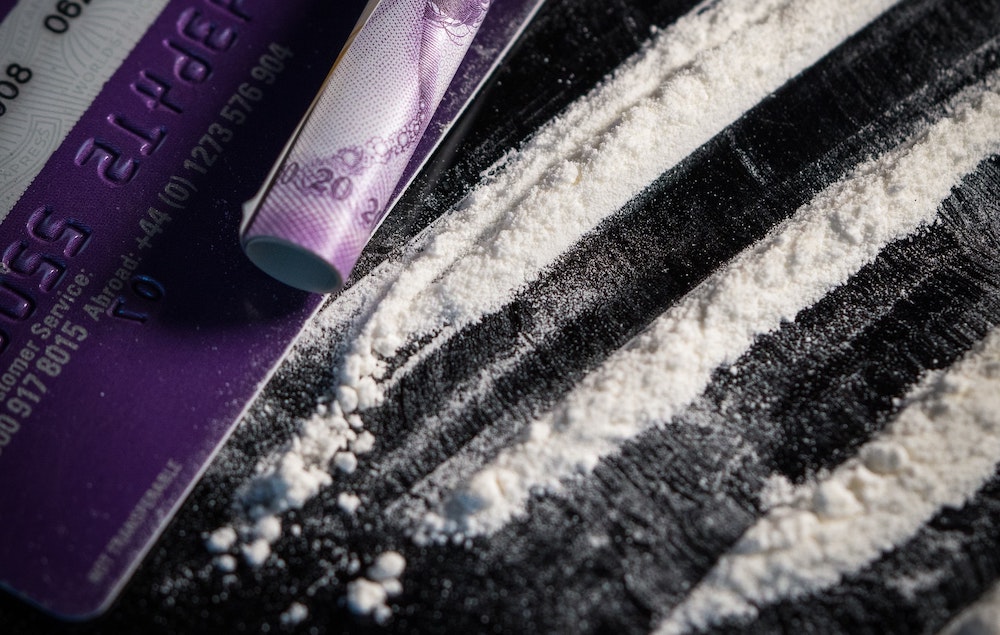Under certain circumstances, rehab isn’t the answer for those with substance use disorder
This post is reprinted with permission from one of TreatmentMagazine.com’s go-to blogs about addiction, treatment and recovery: Recovery Review.
By David McCartney
I saw an exchange on Twitter the other day that on first reading raised my eyebrows and created empathetic frustration. An individual was apparently being refused rehab because “he continued to use drugs.” Surely that’s the best reason for going to rehab. We don’t refuse treatment to diabetics because their diets are problematic, or because their symptoms are out of control. Indeed, we prioritize treatment in such cases.
Opening up access to rehab is a key strand in the Scottish Government’s National Mission to tackle Scotland’s drugs problem. The work the Residential Rehabilitation Development Working Group has done to support the government with this has identified problems people face when they try to access rehab and made recommendations aimed at removing barriers. There has been progress, though much work remains to be done. The recent final DDTF report (Drug Deaths Task Force) highlights the importance of having rehab as an option in an integrated treatment system. People who may well benefit from rehab are unfortunately still finding roadblocks that are difficult to dismantle.
Addiction and recovery are dynamic processes, throwing up both challenges and opportunities.
I spend a fair bit of time supporting efforts to improve access to rehab, but while I want to see people matched to the treatments that are most closely associated with their goals, there are still legitimate reasons why rehab might not be the right choice at any given moment in time. Addiction and recovery are dynamic processes, throwing up both challenges and opportunities. Circumstances change over time, and presenting symptoms are often better managed more effectively and more safely in other ways.
Illicit Drug Use
I began to wonder about possible legitimate access problems for people who “continue to use.” What if someone was injecting a gram of heroin daily? What if he/she/they were mixing this with crack, benzodiazepines and alcohol? There are few, if any, rehabs that can manage this kind of presentation safely. Many rehabs do not have doctors and nurses to assess and treat individuals. The majority do not offer detox. Some of those that do are not using validated tools to measure withdrawal symptoms and calibrate medication in real time against the symptoms. Withdrawal complications from some drugs (alcohol and benzodiazepines for instance) can be fatal if not managed carefully.
So, the risks can be high. To support such a complex case, you would likely need medical and nursing input—probably on a 24-hour basis. Even detox units with round-the-clock nursing and medical cover could struggle to support this kind of presentation. The initial goal is likely not to be abstinence, but safety and stabilization. Harm reduction and safety really need to be the first considerations every time. There are undoubtedly still gaps in our menu of treatment options. One of those gaps is the stabilization unit—as identified in the DDTF report.

Prescribed Medication
Another potential barrier to access is when people are not using illicit drugs but are on high doses of opioid replacement treatment. Methadone is not an easy drug to detox from, and the risks are significant. There may also be a benzodiazepine prescription to consider.
Treatment needs to be humane and compassionate. The suffering that people go through as they withdraw is real. It can be mitigated against by being in a supportive environment and with the prescription of other medication to help withdrawal symptoms. That said, detoxing people from 80mls (or even 70mls) of methadone over a few weeks involves suffering at a level that I struggle with. I’m speaking from experience; I’ve prescribed for hundreds of patients undergoing opioid detoxes over the years in a setting where there is a high level of medical and nursing supervision. We don’t do high-level detoxes for good reasons.
[T]here are good reasons for setting medication thresholds for entering rehab and taking time with detox.
Nationally, we have no idea of outcomes when such heroic detoxes are undertaken. My fear is that completion rates will be low and relapse rates high. Relapsing to heroin after opioid detox is a risk factor for serious harm. The process of detox can trigger mental health issues including PTSD. Consent needs to be informed and the risks clarified.
Therefore, there are good reasons for setting medication thresholds for entering rehab and taking time with detox. Some of this can be done slowly with support in the community prior to rehab admission, but the idea that a high dose of opioid substitution treatment is not a legitimate concern that may prevent an early rehab admission needs to be robustly challenged.
Wrong Fit, Wrong Time
Sometimes though, rehab is not the right fit. I have lost count of the number of people feeding back that it is “the hardest thing I’ve ever done.” You need to be at the right place and time in your life, and the rehab itself needs to be the right fit for an individual or it needs to be able to flex to meet their needs. Sometimes the individual rehab falls short in what’s on offer. Many people will need more than one episode over several years (and other forms of community treatment and support) before they reach their goals.
“Readiness” [for rehab] is not a stable thing—it shifts. It’s also susceptible to influence.
The concept of readiness for rehab is a difficult one. “Readiness” is not a stable thing—it shifts. It’s also susceptible to influence—we can help people get ready. In some places there is an active program leading up to rehab that is designed to do this. Assessment is a process intended to assess readiness but can also influence it. We need to be careful and clear when we determine that somebody is “not ready.” Admittedly though, I’ve heard plenty of people successfully completing rehab for a second time who self-reported that they were “not ready” the first time.
Perhaps such people were there mainly to appease their family, or were avoiding a consequence, but with the passage of time, they got to a place where it was their time. It’s okay to acknowledge that the time is not right. Plainly, this should not mean that treatment and support are withdrawn—it’s just that this will be different for the moment.
Having not reached your goals through a previous episode of rehab is not a reason to prevent a future episode. “One go and you are out” is not okay. There is often an anomaly in attitudes to MAT and to rehab when relapse occurs in (or shortly after) treatment. Darren McGarvey has aptly captured this: “Relapse on methadone—increase the dose. Relapse after rehab—rehab doesn’t work.” The evidence shows that no treatment is perfect, but persistence is likely to reap benefits.
Rehab as the Savior
When expectation of what rehab can deliver is too high, problems arise. Seeing rehab as “the answer” is unhelpful. There is no one “answer” to addiction. Dependent drug and alcohol use needs a multifaceted approach, best managed through a joined-up support and treatment system and assertive connections to those who know how to manage the journey best—recovery communities and individuals with lived experience.
The weight of expectation that is placed on rehab can greatly exceed the utility of rehab to deliver. Rehab is not something that is done to individuals who are passive recipients. It’s not like a course of radiotherapy or a surgical procedure. It requires active engagement and hard work.

There are practices that rehabs can employ to foster engagement. A peer worker can facilitate attendance at appointments, outreach can reconnect with those who start assessment and fall away. Information and experience sessions prior to assessment can foster hope and commitment. Once in treatment, ambivalence can give way to conviction as a person is cared for by their peers and staff, and their mood, self-esteem and participation improve.
Mental Health
Mental health concerns come up not infrequently as potential obstacles to rehab. There are some specific legitimate concerns. Rehab is not usually the appropriate environment for someone who is actively contemplating or planning suicide or for someone who has an active psychosis or who is in a manic phase of bipolar disorder. Such vulnerable individuals need appropriate focused mental health support and treatment, though I acknowledge that when they are drinking and using drugs they often fall between mental health and addiction services.
We also need to remember that there are many vulnerable people in our treatment and support systems, and it is vital that we do not expose them to stress that might harm them.
Many rehabs do not have access to in-house addiction psychiatrists and CPNs, so there may well be a limit to what can safely and appropriately be managed. It is also true, though, that people with addictions often pick up mental health diagnoses over time. It’s hard to be sure of a mental health diagnosis when people are using and drinking dependently, and it’s important not to discriminate against those with mental health diagnoses.
We also need to remember that there are many vulnerable people in our treatment and support systems, and it is vital that we do not expose them to stress that might harm them. Assessment needs to consider this risk balance carefully. The rehab environment can be amazingly supportive and safe, but it can also be stressful. Living with a group of traumatized individuals in early recovery is not easy.
Where there are complex mental health needs, those individuals could be matched to specific rehab services that offer a higher level of support through their multidisciplinary teams, though such treatment is likely to be more expensive. It is my experience that patients with major mental health diagnoses and those labeled with most personality disorders can often be managed in a supportive way in rehab settings.
Risk to Others
One striking thing about meeting needs in the rehab setting is that staff have to consider not only the needs of the individual, but the needs of the group and of other individuals in that group. There can be patterns of behavior that make it difficult to justify an admission: e.g., recurrent impulse control issues leading to violence against others, a history of repeated arson, certain sex offenses, etc. Sometimes an individual may have smuggled drugs into the rehab and encouraged others to use on a previous admission, putting several people at risk. None of these things are absolute contraindications, but the needs of others have to be carefully considered.
Assessments need to identify potential risks and work out if they can be mitigated, but sometimes the conclusion reached means an admission cannot take place.
Even where physical violence is less likely, aggressive behavior can trigger PTSD symptoms in other residents or cause others to leave through fear. Sometimes the history suggests that problem substance use is the catalyst to such behavior, and the difficulties are less likely when use stops. Staff working in rehabs are often skilled at supporting people with impulse control issues, but there are limits. Assessments need to identify potential risks and work out if they can be mitigated, but sometimes the conclusion reached means an admission cannot take place.
Conclusion on Rehab
While the barriers to rehab which individuals and their families encounter are often non-legitimate—things that most certainly need to be challenged—there can be warranted reasons why rehab is not the right path. Sometimes work needs to be done, and sometimes rehab will not be the right fit for a variety of reasons that can relate to illicit drug use and levels of prescribed drug use. Gaps in treatment provision, such as stabilization units, need to be plugged.
[I]t’s … okay to accept that there might be good reasons why rehab is not the right option right now.
Judgments about such matters are complex, and we must do our utmost to ensure that shared decision-making is at the heart of our process. Decisions need to be scrutinized and appealed where necessary, to make sure that there is no discrimination. But ultimately, while everyone ought to be informed about the possibility of rehab, it’s also okay to accept that there might be good reasons why rehab is not the right option right now. That doesn’t mean care is withdrawn, just that it is of a different sort—for the moment.
This Recovery Review post is by David McCartney, who is an addiction medicine specialist and Clinical Lead at LEAP, a quasi-residential therapeutic community addiction treatment program in Scotland. He trained as a family medicine practitioner and spent much of his career in practice in inner-city Glasgow. Having retrained in addictions, he now works exclusively in the field and until recently was an advisor to the Scottish government on drugs policy. He is a member of the Royal College of General Practitioners. His opinions expressed here don’t necessarily represent the views of his employer. Find more of his writing, as well as a thought-provoking range of articles, insights and expert opinions on treatment and addiction, at RecoveryReview.com.blog.
Top photo: Ivan Aleksic; middle photo: Colin Davis; bottom photo: Christopher Lemerci














